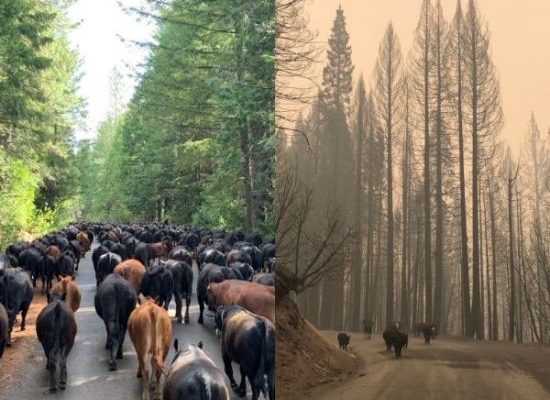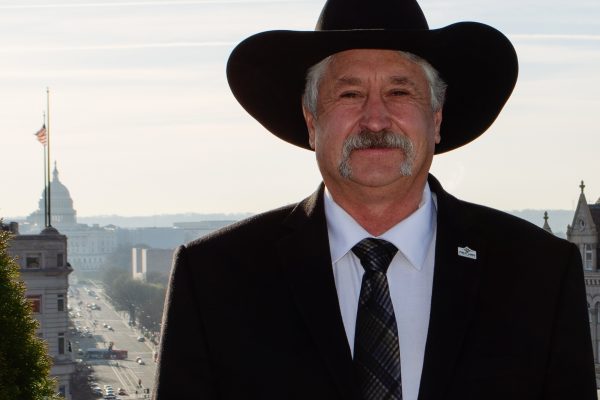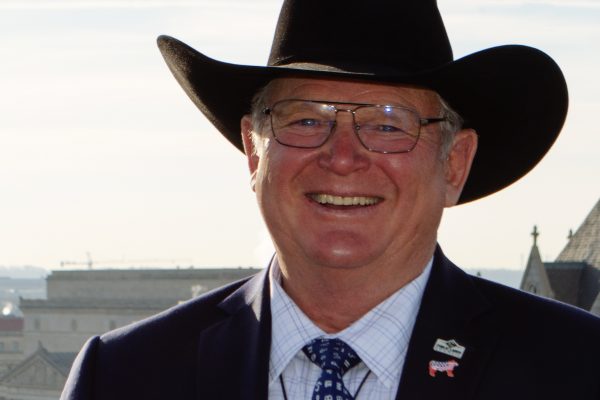By Theodora Dowling
Special to Western Livestock Journal, September 22, 2014
If it walks like a duck and quacks like a duck, but the U.S. Forest Service (USFS) says it isn’t a duck…granted, nobody is likely to care. But sometimes, what the agency calls something is important, according to Public Lands Council (PLC) member, National Cattlemen’s Beef Association (NC- BA) Federal Lands Chairman and Arizona rancher David Cook. Cook has led a tit-for-tat discussion between PLC/NCBA and the Forest Service over whether “annual operating instructions” (AOIs)— which direct ranchers on how to implement their grazing permits each year—are “decision documents” that can be officially refuted (appealed) by the rancher.
“What [the Forest Service] is doing to people is just darned terrible,” said Cook in an interview with WLJ. “They’re allowing their rangers to issue these AOIs that sometimes include the most unbelievable demands on ranchers— then they’re saying, ‘You can’t appeal this, it’s not a decision.’” Cook cited a few examples, both from the Southwest, where the problem seems particularly acute.
“Take this rancher on the Tonto (National Forest). He has a permit to run over 400 head year-round,” said Cook. “But then he gets a ‘revised’ AOI in the mail that di rects him to take 200 head off within a period of two weeks, out of the clear blue. When he tries to appeal that decision, the agency’s reply is ‘AOIs are not appealable.’” According to the AOI, lack of forage wasn’t the problem, but the Forest Service was concerned there wasn’t enough stock tank water for the amount of cows the rancher had.
“We all know that hauling water is a common practice, especially on dry years,” said Cook. “Instead of allowing that, they wanted him to get rid of two-thirds of his income within a couple weeks. What’s he supposed to do with his cows in two weeks?” In another example, Cook said that his family and everyone in his district received some outlandish instructions in their AOIs recently.
“Normally we get an annual operating instruction letter that’s about a page-and-a-half,” Cook said. “This year, we have this new 20-something-year-old range staff, who issues us an 11-page AOI. It says we have one year to paint all our water tanks and improvements a Forest Service-approved color, and that we have to leave all of our water lines and water troughs full for wildlife—and maintain those all year long.
That’s completely outside the allotment management plan terms, and completely outside our permit terms. But again, Forest Service says we can’t appeal.”
“Letters of non-compliance” will be issued, Cook said, if ranchers don’t follow their annual operating instructions. In other words, actions can be taken against the rancher for not complying with the AOI, but ranchers can’t take administrative action to oppose the AOI.
PLC and NCBA have pursued both administrative and congressional relief of the problem, but to date nothing has kicked loose. In response to industry’s concerns, the Forest Service issued a direction to its regional foresters in August of 2013.
“AOIs do not permanently modify a grazing permit,” the directive stated. “… AOIs are not decision documents nor should they contain requirements that have not been already identified in the grazing permit or within the scope of the [National Environmental Policy Act] decision for the allotment.”
“That’s just it—the AOIs shouldn’t include new requirements,” said PLC Vice President Dave Eliason, a Utah cattle rancher with Forest Service permits in nearby Idaho. “But what if they do?” Eliason said that he personally hasn’t had any problem with unreasonable AOIs being issued.
“Both the forests we’re on, they’re terrific to work with,” said Eliason. “But certain offices, certain people, will lash out. I think that’s where the problem comes from. Who’s working in those offices—do you get along with them? Are they against grazing?” He likened the extensive discretion given to forest rangers on issuing AOIs to another problem facing ranchers on federal lands in Nevada. There, a Bureau of Land Management (BLM) policy on drought is giving district managers long rein to take “management actions.” Those “actions” could vary from fencing sensitive areas to completely removing livestock for multiple years at a time—at the district manager’s discretion.
Several families in the Battle Mountain district have recently been issued a final decision by their district manager to take their cows off their allotment for an untold amount of time— even though they aren’t experiencing drought conditions on their allotment, and much of it has abundant feed.
“Just like with the Battle Mountain issue, if the federal officer wants to throw his weight around, he can,” Eliason told WLJ. “At least now, industry can appeal the BLM decision.”
According to Cook, the problem might be solved if Forest Service would revise its regulations.
“Forest Service has argued that if they let AOIs become appealable, then we’ll see anti-grazing groups appealing them every time they get a chance. But we believe the agency could get around that threat,” Cook told WLJ. “Just say, ‘In the case where the AOI differs from the allotment management plan or permit, the permittee has the right to appeal.’” “It might be just too simple and too logical for it to work,” Eliason laughed, referring to a regulatory change. “Maybe it will take action from Congress. But whatever happens, we need to get some assurance for our ranchers that they won’t be asked to beg and plea on bended knee to their forest rangers every time that ranger is drafting annual operating instructions.” — Theodora Dowling, WLJ Correspondent




